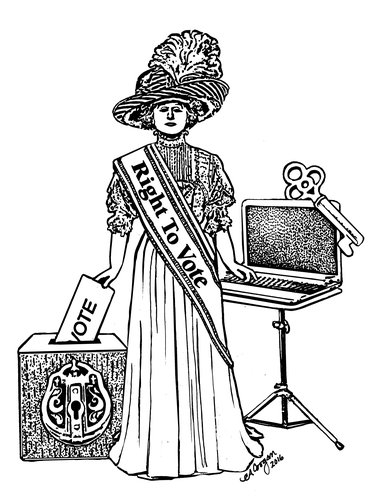Electronic registration is the key to getting more New Yorkers to vote
A century and a half ago, women in the United States began gathering in groups to advocate for the right to vote. They were armed only with their banners and their voices. Over the course of 70 years, women marched, and sang, wrote and lectured on the right for women to vote.
Many of these were women were ostracized and jailed. When they protested with hunger strikes in jail, many were force fed. It wasn’t until 1920 that the 19th Amendment was ratified, giving women the right to vote.
A half-century ago, Susan Butler marched from Selma to Montgomery. She was part of a movement that changed America. Millions of African Americans had been disenfranchised by discriminatory requirements adopted in southern states.
The first 54-mile trek, on March 7, 1965, became known as “Bloody Sunday.” Unarmed marchers were confronted with tear gas and billy clubs. Photographs of and news stories about the horrors reached across America. Two days later, those in the second march turned back. The Alabama governor refused to protect the marchers; the federal government stepped in.
The third march started in Selma on March 21 of that year and ended at the state capital on March 25. The nation was riveted; 25,000 people gathered at the capital in support of voting rights. People died, literally died, to get the Voting Rights Act passed.
Butler will speak about her experiences at the Voorheesville Public Library on April 20. We would be wise to listen, to remember the sacrifices made in the past for what should have been an inalienable right.
We also need to consider the present and the future. Today, March 31, is the deadline for the passage of the state budget. Measures within the budget bills have been proposed by the New York State Bar Association that would modernize voter registration. We support a system of electronic registration.
A 2013 bar association committee report paints a stark picture: For a decade, New York has been near the bottom of the 50 states in voter turnout, and well below the national average. Only 35.5 percent of the voting-eligible population voted for the highest office on the ballot in the 2010 general elections. Less than 64 percent of eligible New Yorkers were registered to vote as of 2010 — and the numbers have declined since then.
Between 1984 and 2000, New York’s voter participation was near and sometimes higher than the national average. Since 2000, many other states have modernized their voting and registration process. But not New York. That appears to be the reason for its decline in registered voters.
Getting more voters to register is important because typically 90 percent of those who are registered, vote.
The committee’s top conclusion is to modernize the registration process, making it part of transactions with state or federal agencies and making it available online. Currently, registration is done on paper — in person or by mail.
The committee concluded that, after an initial investment, the new registration process would be more efficient, more accurate, and less costly. “There is also good reason to think that such a system will reduce the potential for registration fraud,” the report says, marshaling evidence of errors caused by paper records that can’t easily be shared.
Since New Yorkers aged 18 to 24 have the lowest rate of registration, the report recommends voluntary pre-registration of 16- and 17-year-olds, since that has worked well in other states to increase the number of young voters.
Same-day registration also increases turnout. In New York, this would require a constitutional amendment, difficult to accomplish. The report also says that early in-person voting ahead of Election Day, has “proved to be extremely popular in other states,” but may also require a constitutional amendment. It’s best to set these aside — perhaps take them up at a constitutional convention, if voters endorse having one — in order to focus on the more attainable electronic registration.
Neighboring Canada has 93 percent of its eligible citizens registered, using a national database. In the United States, practices differ markedly from state to state — with North Dakota not even requiring registration.
New York is at the far end of the time spectrum, requiring registration 25 days before Election Day. “Historically,” the bar association committee report says, “the requirement to register well in advance of an election has proven difficult for many groups, including young people, low-income populations, African Americans, Latinos, and people who move frequently.”
The report also notes, “Interest and motivation to vote typically rises dramatically in the final weeks before an election, just at the time when registration is no longer an option in New York.” Certainly, the governor, in 2012, took a big step in the right direction with an online registration form through a web portal — a secure portion — of the state’s Department of Motor Vehicles website. But that is limited to those who drive, excluding the poor, the elderly, and many big-city residents.
We need a system that would be inclusive for all New Yorkers. And we need it now. People have suffered and died for the right to vote. We should honor that struggle. Our lawmakers should work to update the 100 sections of State Election Law written before the Internet. If they miss this chance, we should be vigilant to press on.
And in the meantime, each of us with the right to vote should exercise that right. We’ll all be the stronger for it.
— Melissa Hale-Spencer


